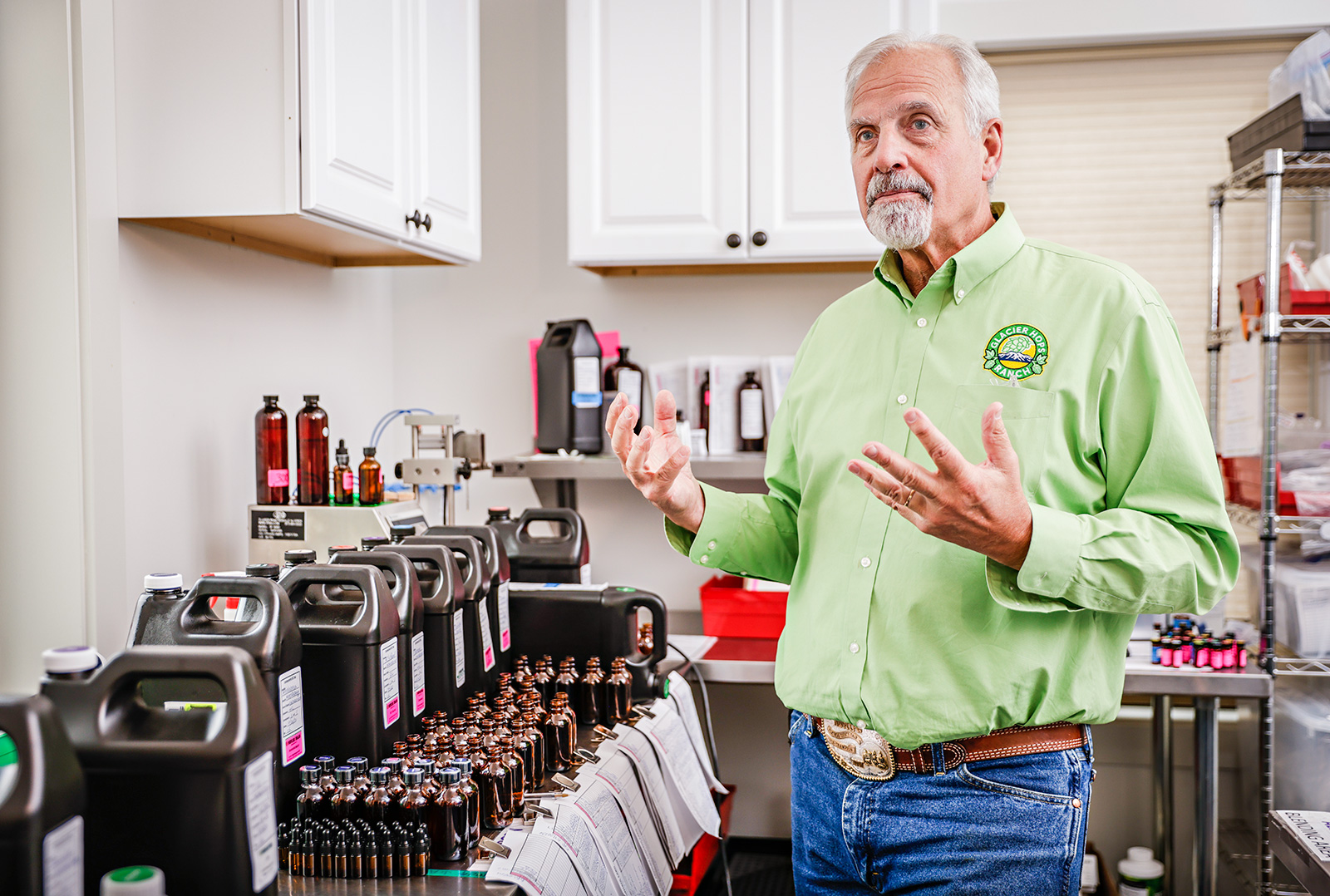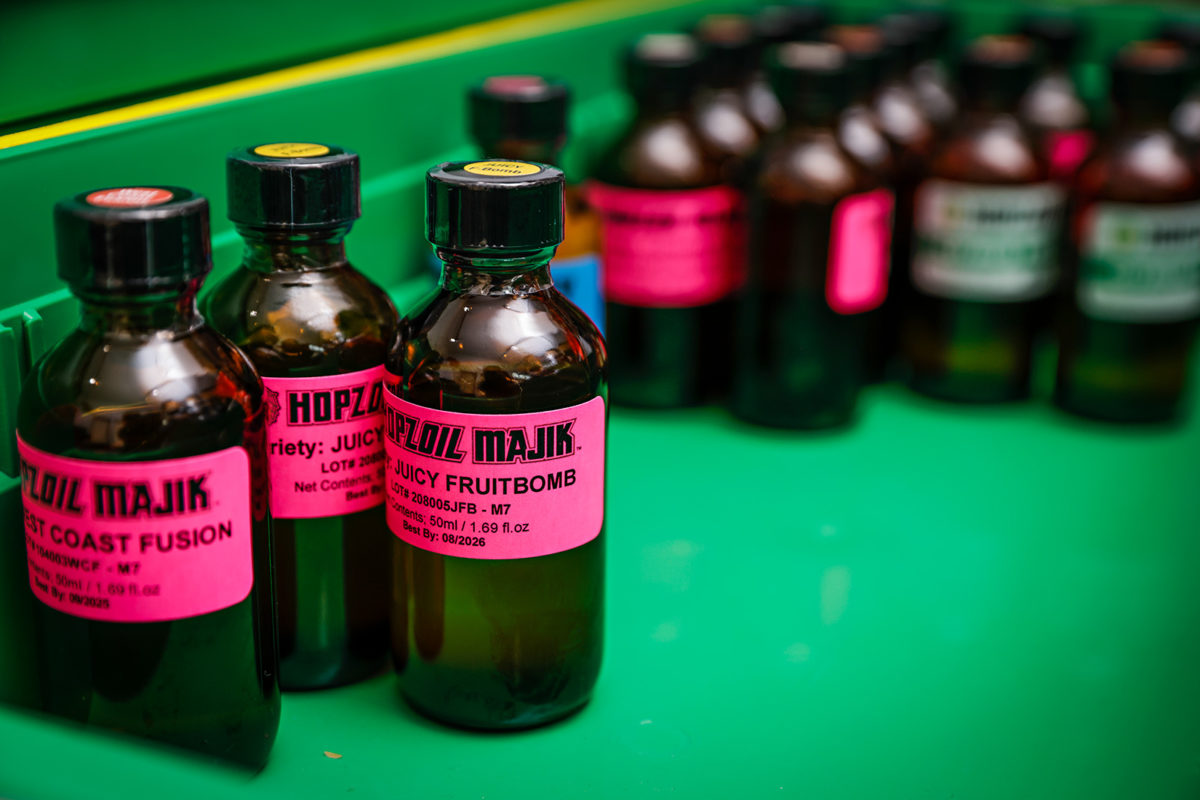Flathead-Grown Hops in International Beers
Glacier Hops Ranch has collaborated with Flathead Valley Hops to export pellet and oil products globally, earning multiple Small Business Administration Awards this year as the companies continue to grow
By Maggie Dresser
In 2012, Tom Britz started growing hops in the Flathead Valley as a side gig, hoping to experiment with the aromatic crop that’s traditionally grown in the Pacific Northwest and other states bordering Canada.
Britz planned to have a small operation growing hops for Montana breweries, but he quickly realized that it was far more labor intensive than he imagined. Three years later, he started growing at Glacier Hops Ranch fulltime and attended a German trade show that helped expand his horizons.
A decade later, Britz no longer grows hops, but instead collaborates with Flathead Valley Hops in Creston. He also shifted his operation to distribution, marketing and exporting. This year, Glacier Hops Ranch won the National Small Business Administration (SBA) Exporter of the Year award and two more awards for the Rocky Mountain Region and the Montana award.
“This is not what I thought it was it was going to be,” Britz said. “I thought I was going to be a small hop grower growing Montana hops for Montana craft breweries.”
Glacier Ranch Hops has some domestic clients, but most of his business involves exporting hops pellets and hopzoil, a concentrated, liquid form of hops, to multiple continents with customers, some as large as Heineken, spanning 50 countries.
Britz has been collaborating with Flathead Valley Hops for the last few years where owner Hunter Riddle, a fourth-generation farmer, grows hops on 165 acres in Creston. At the end of summer, the hops are harvested and transformed into either pellets or turned into hopzoil.

To create pellets, the hops are kiln-dried at the farm for between five and nine hours before they’re pelletized in large machines and packaged at Glacier Hops Ranch.
Hopzoil, however, is produced using a distiller. After the crop is harvested, the hops are steam distilled for about two-and-a-half hours at Fischer Farms, located five miles down the road from Flathead Valley Hops. The distilling process separates the oil, which is then extracted and sent to chemists in Denver, where it’s emulsified to create a water-soluble form that will mix well in beer.
“The main difference is the raw ingredient is those fresh hops in the hopzoil, whereas pellets come from dry hops,” Britz said. “A hop farm smells fantastic because at the temperature that they have to dry these hops, you’re losing the volatiles that evaporate into the air. It smells great – but you’re not capturing those. We capture all those with our process.”
Bitz says the hopzoil contains less biomass, meaning they get more out of the yield, and the shelf-life is three to five times longer than the pellets.
The final product is sent back to the Flathead from Denver, where it’s tested, packaged, labeled at Glacier Hops Ranch and sent out to customers.
This year, Britz sold about an equal amount of pellets as hopzoil, but the demand varies year-by-year.
In addition to distribution, Glacier Hops Ranch also operates a research brewery, which is classified as a laboratory, where research brewer Todd Malo experiments with different hopzoil varieties. With the research brewery, he can figure out which hops pair the best with different types of beer, and he can educate their clients.
While Glacier Hops Ranch experienced a slowdown in 2020, Britz said the company bounced back in 2021 as the demand rebounded. 2021 was a year of growth, Britz said, and the company is also seeing high demand in European markets after yields were low in countries like Germany and Czech Republic following widespread droughts.

But that growth has been steady in the past decade as hops cultivation has become more common in Montana. When Britz first started Glacier Hops Ranch, he was told the crop wouldn’t grow in the state. But as he continued to grow the crop, he learned Montana was at the same latitude as other hops producers in the United States and European countries. He discovered the long daylight hours are also beneficial for cultivation.
Flathead Valley Hops has about 165, with plans to grow more next year, while Big Sky Hops runs a small operation of about 12 acres in Bigfork.
Now that there are multiple growers in the valley along with a distillery to process the hopzoil, he says the collaborations have formed an industry. Montana is ranked sixth in hops production, Britz says, behind Washington, Idaho, Oregon, Michigan and New York.
At Revel Brewing Company in Australia, brewers used Glacier Hops Ranch products to craft a double dry-hopped IPA, resembling a pina colada, which they recently launched.
To reflect the hops origins, graphic designers with the company googled Whitefish, Montana and plastered an image of Whitefish Lake on the cans.
“They’ve never been to Whitefish, but they make it a big deal on the can that these were grown in Montana,” Britz said. “I look at my role as helping to distribute Flathead Valley-grown hops and hopzoil around the world.”
For more information, visit www.glacierhopsranch.com.